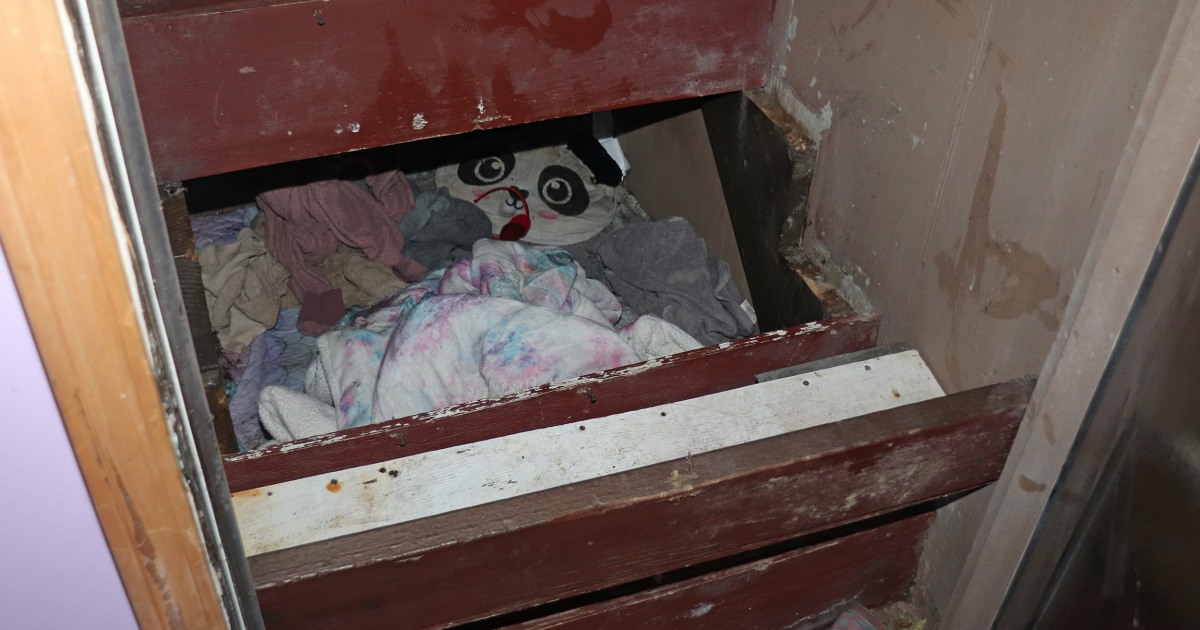
A 4-year-old girl who went missing two years ago was found alive Monday in a small town in New York state. Paislee Shultis was discovered by police in a dark, wet space under the staircase to the basement of a house with her biological mother, Kimberly Cooper. Paislee’s biological father, Kirk Shultis Jr., and Cooper had lost custody of their daughter before her disappearance. The couple were arrested and charged with custodial interference and endangering the welfare of a child. Paislee, meanwhile, has been returned to her legal guardian in a different part of the state.
For all the research demonstrating the problems stemming from trauma, there’s also research that points to recovery.
It’s not clear how often Paislee, now 6, was confined to the space under the stairs during the time she was held, though police, who previously had visited the home several times to search for her, said she had not gone to school since her disappearance and it was unclear whether she’d ever been taken to a doctor.
Even if the child was just hidden under the stairs occasionally, including during the five hours of the search in which she was discovered, it’s probable that she experienced confinement trauma, given her sudden loss of her legal guardian when she was taken two years ago, involuntary prolonged isolation from other family members and peers, likely restricted behavior — presumably she was not able to leave the premises — and severe disruption in routine, likely leading to extreme fear and possibly terror.
It’s important to caveat any conversation about her circumstances when we don’t yet know the full picture, of course. But it still can be helpful to talk about the effects of such captivity generally and what healing might look like.
As Robin Gurwitch, a professor at Duke University and the director for the Center for Child and Family Health explained, “What happened to this young girl over the past two years could absolutely be considered an example of complex trauma.” That is, likely multiple, prolonged traumatic experiences of an interpersonal nature. At a minimum, it sounds as if she was cut off from socialization with peers and connection with her legal guardian. But it could also have involved constriction of movement, as well as a lack of adequate food, water and medical care.
What makes this type of trauma even more potentially devastating is that this occurred early in the girl’s life allegedly at the hands of her parents, who are supposed to be the most important source of safety and stability for a child. Such trauma can affect all aspects of her growth, from how secure and healthy her relationships are, to how her body, brain, behaviors, thinking, learning and emotions develop.
If not effectively addressed, children who have experienced traumatic or adverse experiences are at increased risk for physical, mental and lifestyle problems in adulthood. Kidnapping, constriction of movement and involuntary removal from friends and family members can result in viewing the world and other people as dangerous, unsafe and unpredictable.
And as Gurwitch pointed out, “Children with significant trauma often have extremely low self-esteem, trouble with learning, problematic behaviors and problems with social relationships, like making and keeping friends as children.”
There are of course many factors that can affect a child’s psychological response and coping in the face of abduction. When a disappearance is involuntary, such as in the cases of war, conflict or kidnapping, the effects can include symptoms of depression, anxiety and post-traumatic stress. The emotional harm from family abductions is often particularly related to the child’s disruption in routines and the levels of hostility between caretakers.
And this particular case has uncommon dimensions, noted David Finkelhor, a professor at the University of New Hampshire and the director of the Crimes against Children Research Center, “Family abduction is very complicated, and this is a very unusual form” because it was the child’s parents who allegedly removed the child from a nonparental caregiver, he said. He pointed out that most family abduction cases are typically ones in which one parent deprives another of custodial access.
He stressed that much still isn’t known about her case, and those details could play a role in her recovery. “A lot depends, also, on the kind of maltreatment the child suffered that prompted her removal from her parents in the first place, and whether this continued during the abduction.”
One positive aspect of the situation, however, is that for all the research demonstrating the problems stemming from trauma, there’s also research that points to recovery. “On the plus side, we also know that young children are incredibly resilient and that having caring, supportive adults is especially important for recovery,” said Rochelle Hanson, a professor at the Medical University of South Carolina and the National Crime Victims Research and Treatment Center.
While the research on the challenges of reunifying children and families following abduction is limited and evolving, some advocate for a coordinated approach that emphasizes establishing survivor safety first. Such a comprehensive program involving mental health, law enforcement, child protection, judicial and victim assistance services could decrease the risk of emotional distress.
“When children get these treatments by trained, skilled providers, they can go on and lead healthy, productive and fulfilling lives,” Hanson said. One resource is the National Child Traumatic Stress Network, created by Congress in 2000 to improve care and access to services for traumatized children across the United States. Let’s hope the needed intervention is provided to the young girl in this case. Healing from trauma is possible, and even probable with good support.
Source: | This article originally belongs to Nbcnews.com










